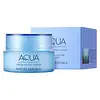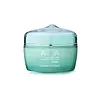What's inside
What's inside
 Key Ingredients
Key Ingredients

 Benefits
Benefits

 Concerns
Concerns

 Ingredients Side-by-side
Ingredients Side-by-side

Sea Water
HumectantGlycerin
HumectantMethyl Trimethicone
Skin ConditioningMethylpropanediol
Solvent1,2-Hexanediol
Skin ConditioningWater
Skin ConditioningBetaine
HumectantSpirulina Platensis Extract
Skin ProtectingHydrolyzed Rhodophyceae Extract
Ecklonia Cava Extract
Skin ConditioningGelidium Cartilagineum Extract
Skin ProtectingCystoseira Compressa Extract
Saccharina Japonica Extract
Skin ConditioningDunaliella Salina Extract
Skin ConditioningCrithmum Maritimum Extract
Skin ConditioningSargassum Fulvellum Extract
Skin ConditioningUndaria Pinnatifida Extract
Skin ConditioningCaulerpa Racemosa Extract
AstringentPseudoalteromonas Ferment Extract
HumectantSpirulina Maxima Extract
SmoothingChondrus Crispus Extract
Skin ConditioningJania Rubens Extract
Skin ConditioningSaccharina Longicruris Extract
HumectantMacrocystis Pyrifera Extract
Skin ConditioningUlva Lactuca Extract
Skin ConditioningUndaria Pinnatifida Powder
AbsorbentCodium Fragile Extract
Skin ConditioningChlorella Minutissima Extract
Skin ConditioningChlorella Vulgaris Extract
Skin ConditioningHizikia Fusiforme Extract
Skin ConditioningSalicornia Herbacea Extract
Skin ConditioningPlankton Extract
Skin ConditioningHaematococcus Pluvialis Extract
AntioxidantLaminaria Digitata Extract
Skin ProtectingGlycyrrhiza Glabra Root Extract
BleachingPaeonia Lactiflora Root Extract
Skin ConditioningCnidium Officinale Root Extract
Skin ConditioningPueraria Lobata Root Extract
HumectantPortulaca Oleracea Extract
Skin ConditioningSoluble Collagen
HumectantAloe Barbadensis Leaf Juice
Skin ConditioningSodium Hyaluronate
HumectantAcrylates/C10-30 Alkyl Acrylate Crosspolymer
Emulsion StabilisingHydroxyacetophenone
AntioxidantTromethamine
BufferingEthylhexylglycerin
Skin ConditioningButylene Glycol
HumectantDisodium EDTA
Sea Salt
AbrasiveTocopherol
AntioxidantXanthan Gum
EmulsifyingCaprylyl Glycol
EmollientMalic Acid
BufferingNonapeptide-1
Skin ConditioningAcetyl Hexapeptide-8
HumectantCopper Tripeptide-1
Skin ConditioningTripeptide-1
Skin ConditioningPalmitoyl Tetrapeptide-7
Skin ConditioningPalmitoyl Tripeptide-1
Skin ConditioningPalmitoyl Pentapeptide-4
Skin ConditioningHexapeptide-9
Skin ConditioningParfum
MaskingLaminaria Saccharina Extract
Skin ProtectingZostera Marina Extract
Skin ConditioningSea Water, Glycerin, Methyl Trimethicone, Methylpropanediol, 1,2-Hexanediol, Water, Betaine, Spirulina Platensis Extract, Hydrolyzed Rhodophyceae Extract, Ecklonia Cava Extract, Gelidium Cartilagineum Extract, Cystoseira Compressa Extract, Saccharina Japonica Extract, Dunaliella Salina Extract, Crithmum Maritimum Extract, Sargassum Fulvellum Extract, Undaria Pinnatifida Extract, Caulerpa Racemosa Extract, Pseudoalteromonas Ferment Extract, Spirulina Maxima Extract, Chondrus Crispus Extract, Jania Rubens Extract, Saccharina Longicruris Extract, Macrocystis Pyrifera Extract, Ulva Lactuca Extract, Undaria Pinnatifida Powder, Codium Fragile Extract, Chlorella Minutissima Extract, Chlorella Vulgaris Extract, Hizikia Fusiforme Extract, Salicornia Herbacea Extract, Plankton Extract, Haematococcus Pluvialis Extract, Laminaria Digitata Extract, Glycyrrhiza Glabra Root Extract, Paeonia Lactiflora Root Extract, Cnidium Officinale Root Extract, Pueraria Lobata Root Extract, Portulaca Oleracea Extract, Soluble Collagen, Aloe Barbadensis Leaf Juice, Sodium Hyaluronate, Acrylates/C10-30 Alkyl Acrylate Crosspolymer, Hydroxyacetophenone, Tromethamine, Ethylhexylglycerin, Butylene Glycol, Disodium EDTA, Sea Salt, Tocopherol, Xanthan Gum, Caprylyl Glycol, Malic Acid, Nonapeptide-1, Acetyl Hexapeptide-8, Copper Tripeptide-1, Tripeptide-1, Palmitoyl Tetrapeptide-7, Palmitoyl Tripeptide-1, Palmitoyl Pentapeptide-4, Hexapeptide-9, Parfum, Laminaria Saccharina Extract, Zostera Marina Extract
Water
Skin ConditioningGlycerin
HumectantCyclomethicone
EmollientDipropylene Glycol
HumectantHydrogenated Polydecene
EmollientNiacinamide
Smoothing1,2-Hexanediol
Skin ConditioningCetyl PEG/PPG-10/1 Dimethicone
EmulsifyingSodium Chloride
MaskingMagnesium Sulfate
Zinc Sulfate
AntimicrobialRosa Canina Fruit Oil
EmollientCitrus Limon Fruit Extract
MaskingMalpighia Punicifolia Fruit Extract
AntioxidantEuterpe Oleracea Fruit Extract
Sodium Hyaluronate
HumectantSargassum Fulvellum Extract
Skin ConditioningGelidium Cartilagineum Extract
Skin ProtectingCaprylic/Capric Triglyceride
MaskingButylene Glycol
HumectantChlorella Minutissima Extract
Skin ConditioningMacrocystis Pyrifera Extract
Skin ConditioningEnteromorpha Compressa Extract
Skin ProtectingLaminaria Japonica Extract
Skin ProtectingCaulerpa Lentillifera Extract
Aloe Barbadensis Leaf Extract
EmollientPropanediol
SolventGlycereth-26
HumectantEthylhexylglycerin
Skin ConditioningTriethanolamine
BufferingCarbomer
Emulsion StabilisingCaffeine
Skin ConditioningXanthan Gum
EmulsifyingDisodium EDTA
Parfum
MaskingPhenoxyethanol
PreservativeWater, Glycerin, Cyclomethicone, Dipropylene Glycol, Hydrogenated Polydecene, Niacinamide, 1,2-Hexanediol, Cetyl PEG/PPG-10/1 Dimethicone, Sodium Chloride, Magnesium Sulfate, Zinc Sulfate, Rosa Canina Fruit Oil, Citrus Limon Fruit Extract, Malpighia Punicifolia Fruit Extract, Euterpe Oleracea Fruit Extract, Sodium Hyaluronate, Sargassum Fulvellum Extract, Gelidium Cartilagineum Extract, Caprylic/Capric Triglyceride, Butylene Glycol, Chlorella Minutissima Extract, Macrocystis Pyrifera Extract, Enteromorpha Compressa Extract, Laminaria Japonica Extract, Caulerpa Lentillifera Extract, Aloe Barbadensis Leaf Extract, Propanediol, Glycereth-26, Ethylhexylglycerin, Triethanolamine, Carbomer, Caffeine, Xanthan Gum, Disodium EDTA, Parfum, Phenoxyethanol
Ingredients Explained
These ingredients are found in both products.
Ingredients higher up in an ingredient list are typically present in a larger amount.
1,2-Hexanediol is a synthetic liquid and another multi-functional powerhouse.
It is a:
- Humectant, drawing moisture into the skin
- Emollient, helping to soften skin
- Solvent, dispersing and stabilizing formulas
- Preservative booster, enhancing the antimicrobial activity of other preservatives
Butylene Glycol (or BG) is used within cosmetic products for a few different reasons:
Overall, Butylene Glycol is a safe and well-rounded ingredient that works well with other ingredients.
Though this ingredient works well with most skin types, some people with sensitive skin may experience a reaction such as allergic rashes, closed comedones, or itchiness.
Learn more about Butylene GlycolWe don't have a description for Chlorella Minutissima Extract yet.
Disodium EDTA plays a role in making products more stable by aiding other preservatives.
It is a chelating agent, meaning it neutralizes metal ions that may be found in a product.
Disodium EDTA is a salt of edetic acid and is found to be safe in cosmetic ingredients.
Learn more about Disodium EDTAEthylhexylglycerin (we can't pronounce this either) is commonly used as a preservative and skin softener. It is derived from glyceryl.
You might see Ethylhexylglycerin often paired with other preservatives such as phenoxyethanol. Ethylhexylglycerin has been found to increase the effectiveness of these other preservatives.
We don't have a description for Gelidium Cartilagineum Extract yet.
Glycerin is already naturally found in your skin. It helps moisturize and protect your skin.
A study from 2016 found glycerin to be more effective as a humectant than AHAs and hyaluronic acid.
As a humectant, it helps the skin stay hydrated by pulling moisture to your skin. The low molecular weight of glycerin allows it to pull moisture into the deeper layers of your skin.
Hydrated skin improves your skin barrier; Your skin barrier helps protect against irritants and bacteria.
Glycerin has also been found to have antimicrobial and antiviral properties. Due to these properties, glycerin is often used in wound and burn treatments.
In cosmetics, glycerin is usually derived from plants such as soybean or palm. However, it can also be sourced from animals, such as tallow or animal fat.
This ingredient is organic, colorless, odorless, and non-toxic.
Glycerin is the name for this ingredient in American English. British English uses Glycerol/Glycerine.
Learn more about GlycerinThis ingredient comes from a brown kelp called Macrocystis pyrifera. It is rich in antioxidants and can help hydrate skin.
Brown kelp are rich in unsaturated fatty acids and phlorotannins. Phlorotannins have been found to help with inhibiting melanin production and helping reduce the signs of aging due to their high antioxidant activity.
One study suggests phlorotannins may even have some sun protection factor due to their antioxidant activity. However, this ingredient should not replace your sunscreen.
Macrocystis pyrifera is made up of about: 60% carbohydrates, 10% protein, and 1.50% lipid content. The last 30% is kelp ash.
This kelp can be found in the southern hemisphere and north Pacific.
Learn more about Macrocystis Pyrifera ExtractParfum is a catch-all term for an ingredient or more that is used to give a scent to products.
Also called "fragrance", this ingredient can be a blend of hundreds of chemicals or plant oils. This means every product with "fragrance" or "parfum" in the ingredients list is a different mixture.
For instance, Habanolide is a proprietary trade name for a specific aroma chemical. When used as a fragrance ingredient in cosmetics, most aroma chemicals fall under the broad labeling category of “FRAGRANCE” or “PARFUM” according to EU and US regulations.
The term 'parfum' or 'fragrance' is not regulated in many countries. In many cases, it is up to the brand to define this term.
For instance, many brands choose to label themselves as "fragrance-free" because they are not using synthetic fragrances. However, their products may still contain ingredients such as essential oils that are considered a fragrance by INCI standards.
One example is Calendula flower extract. Calendula is an essential oil that still imparts a scent or 'fragrance'.
Depending on the blend, the ingredients in the mixture can cause allergies and sensitivities on the skin. Some ingredients that are known EU allergens include linalool and citronellol.
Parfum can also be used to mask or cover an unpleasant scent.
The bottom line is: not all fragrances/parfum/ingredients are created equally. If you are worried about fragrances, we recommend taking a closer look at an ingredient. And of course, we always recommend speaking with a professional.
Learn more about ParfumWe don't have a description for Sargassum Fulvellum Extract yet.
Sodium Hyaluronate is hyaluronic acid's salt form. It is commonly derived from the sodium salt of hyaluronic acid.
Like hyaluronic acid, it is great at holding water and acts as a humectant. This makes it a great skin hydrating ingredient.
Sodium Hyaluronate is naturally occurring in our bodies and is mostly found in eye fluid and joints.
These are some other common types of Hyaluronic Acid:
Learn more about Sodium HyaluronateWater. It's the most common cosmetic ingredient of all. You'll usually see it at the top of ingredient lists, meaning that it makes up the largest part of the product.
So why is it so popular? Water most often acts as a solvent - this means that it helps dissolve other ingredients into the formulation.
You'll also recognize water as that liquid we all need to stay alive. If you see this, drink a glass of water. Stay hydrated!
Learn more about WaterXanthan gum is used as a stabilizer and thickener within cosmetic products. It helps give products a sticky, thick feeling - preventing them from being too runny.
On the technical side of things, xanthan gum is a polysaccharide - a combination consisting of multiple sugar molecules bonded together.
Xanthan gum is a pretty common and great ingredient. It is a natural, non-toxic, non-irritating ingredient that is also commonly used in food products.
Learn more about Xanthan Gum